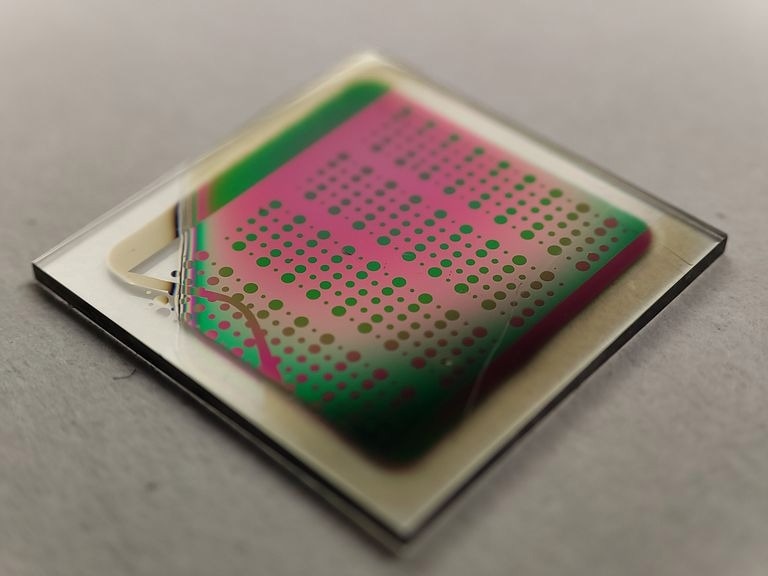As renewable energy sources become more efficient and affordable to adopt, ensuring that any excess energy generated is properly stored for future use is crucial to preventing energy wastage. This is where a novel oxygen-ion battery technology comes into play, representing a vital component in the transition to cleaner energy sources.

Image Credit: TU Wien
Researchers at TU Wien (Vienna) have recently designed a new kind of battery technology – the oxygen-ion battery – which is set to revolutionize the face of energy storage. This breakthrough technology is unique in the sense that it does not depend upon rare-earth materials while offering advanced durability and safety features.
Published in the journal Advanced Energy Materials, the TU Wien team outline the unique features of the oxygen-ion battery technology. The battery has the potential to be used in large energy storage systems to store excess electrical energy from renewable sources such as solar and wind power.
Oxygen-Ion Ceramic Solutions
Lithium-ion (Li-ion) batteries are the most popular option in the technological landscape. From smartphones to electric vehicles, Li-ion batteries are in the driving seat when it comes to battery technology.
However, these batteries present some risks and challenges, particularly when they fail. In such circumstances, Li-ion batteries become a major fire or explosion hazard, and as a result, they suffer from an incremental decrease in storage capacity over time.
On the other hand, the oxygen-ion battery uses ceramic materials to absorb and release oxygen ions.
The basic principle is actually very similar to the lithium-ion battery… But our materials have some important advantages.
Professor Jürgen Fleig, TU Wien
When applying an electric voltage, the oxygen ions can pass from one ceramic material to another; subsequently, they can move back to the original ceramic material, generating an electric current.
Due to their fire-retardant properties, ceramics are also key to improving battery safety and minimizing the risk of fires. Moreover, as rare-earth elements are not a feature of oxygen-ion batteries, not only are costs reduced, but environmentally harmful extraction methods are also eliminated from the production process.
In this respect, the use of ceramic materials is a great advantage because they can be adapted very well… You can replace certain elements that are difficult to obtain with others relatively easily.
Dr. Tobias Huber, TU Wien
Longevity
The main advantage that oxygen-ion batteries have over Li-ion batteries is longevity.
In many batteries, you have the problem that at some point the charge carriers can no longer move… Then they can no longer be used to generate electricity, the capacity of the battery decreases. After many charging cycles, that can become a serious problem.
Alexander Schmid, TU Wien
As Li-ion batteries tend to decrease in terms of storage capacity with each charging cycle, oxygen-ion batteries can be regenerated using oxygen in ambient air to offset any losses in battery oxygen levels.
Currently, Li-ion batteries offer better efficiencies in terms of energy densities compared to groundbreaking oxygen-ion batteries. However, for this project, the TU Wien team was more focused on improving battery life span and safety for long-term energy storage solutions.
Moreover, this innovative battery technology can operate at elevated temperatures, from 200 °C – 400 °C, which opens up further application potential in certain fields where existing battery technologies fall short in terms of operation and safety.1
While oxygen-ion batteries are not expected to surpass the current potential of Li-ion batteries in terms of powering everyday electronic devices and EVs, the technology could prove to be of extreme value when capturing excess energy produced by wind and solar farms.
The TU Wien researchers have since filed for a patent for the technology in cooperation with working partners in Spain and will continue to investigate the scope for application potential and improve the technology.
References and Further Reading
- New invention: The oxygen-ion battery (2023) New invention: The oxygen-ion battery | TU Wien. Available at: https://www.tuwien.at/en/tu-wien/news/news-articles/news/neue-erfindung-die-sauerstoff-ionen-batterie
- Schmid, A., Krammer, M. and Fleig, J. (2023) “Rechargeable oxide ion batteries based on mixed conducting oxide electrodes,” Advanced Energy Materials, 13(11), p. 2203789. Available at: https://doi.org/10.1002/aenm.202203789.
Disclaimer: The views expressed here are those of the author expressed in their private capacity and do not necessarily represent the views of AZoM.com Limited T/A AZoNetwork the owner and operator of this website. This disclaimer forms part of the Terms and conditions of use of this website.